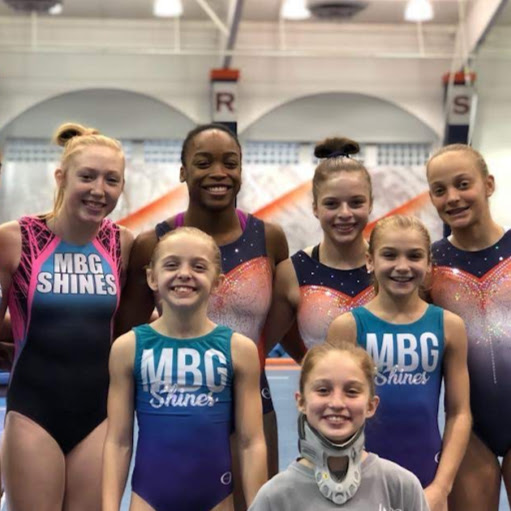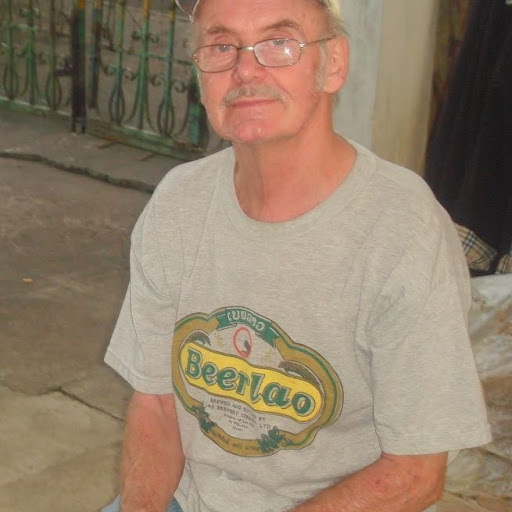James S Sims
age ~67
from Portland, OR
- Also known as:
-
- Jim S Sims
- Susan J Sims
- Phone and address:
-
13537 Michelle Ct, Portland, OR 97223
(503)5905462
James Sims Phones & Addresses
- 13537 Michelle Ct, Portland, OR 97223 • (503)5905462
- Tigard, OR
- 535 Northgate Dr, San Jose, CA 95111 • (925)3389043
- Campbell, CA
- Santa Clara, CA
- Berkeley, CA
Isbn (Books And Publications)

Milton and Scriptural Tradition: The Bible into Poetry
view sourceAuthor
James H. Sims
ISBN #
0826204279

A Comparative Literary Study of Daniel and Revelation: Shaping the End
view sourceAuthor
James H. Sims
ISBN #
0773423613


Approximate Methods in the Design and Analysis of Pressure Vessels and Piping Components: Proceedings Asme Pressure Vessels & Piping Conference 1997 Orlando, Fl.
view sourceAuthor
James R. Sims
ISBN #
0791815633
Lawyers & Attorneys

James Sims - Lawyer
view sourceSpecialties:
Divorce & Separation
Family
Criminal Defense
General Practice
Criminal Defense
Family
Criminal Defense
General Practice
Criminal Defense
ISLN:
923587756
Admitted:
2005
Law School:
Thomas M. Cooley Law School, JD - Juris Doctor, 2004

James Sims - Lawyer
view sourceISLN:
903689753
Admitted:
1983
University:
Gettysburg College, B.A., 1979
Law School:
Southwestern University School of Law, J.D., 1983
License Records
James Richard Sims Jr
License #:
10197 - Expired
Category:
Medicine
Issued Date:
Sep 15, 1958
Effective Date:
Nov 28, 1984
Type:
Physician
Name / Title
Company / Classification
Phones & Addresses
sales rep
East Bay Paralegal Services
Paralegals
Paralegals
16378 E 14Th St STE 205, San Leandro, CA 94578
(510)3179000
(510)3179000
sales rep
East Bay Paralegal Services
Paralegals
Paralegals
16378 E 14 St STE 205, San Leandro, CA 94578
(510)3179000
(510)3179000
COUNTRY HOME MORTGAGE OF OHIO INC
Treasurer , Director
Austin Chapter of The Association of Legal Administrators
President
J AND F LOGISTICS & WAREHOUSING, INC
President
HERITAGE REALTY, INC
BODY OF CHRIST CHURCH
ACKERMAN PROFESSIONAL BUILDING COMPANY, LTD
Us Patents
-
Strained Transistor Architecture And Method
view source -
US Patent:7041543, May 9, 2006
-
Filed:Aug 20, 2004
-
Appl. No.:10/923259
-
Inventors:Bhadri Varadarajan - Beaverton OR, US
William W. Crew - Portland OR, US
James S. Sims - Tigard OR, US -
Assignee:Novellus Systems, Inc. - San Jose CA
-
International Classification:H01I 21/336
H01L 21/8234 -
US Classification:438197, 438475, 438630
-
Abstract:Transistor architectures and fabrication processes generate channel strain without adversely impacting the efficiency of the transistor fabrication process while preserving the material quality and enhancing the performance of the resulting transistor. Transistor strain is generated is NMOS devices using a highly tensile post-salicide silicon nitride capping layer on the source and drain regions. The stress from this capping layer is uniaxially transferred to the NMOS channel through the source-drain regions to create tensile strain in NMOS channel.
-
Pmos Transistor With Compressive Dielectric Capping Layer
view source -
US Patent:7214630, May 8, 2007
-
Filed:May 6, 2005
-
Appl. No.:11/124443
-
Inventors:Bhadri N. Varadarajan - Beaverton OR, US
James S. Sims - Tigard OR, US
Akhil Singhal - Beaverton OR, US -
Assignee:Novellus Systems, Inc. - San Jose CA
-
International Classification:H01L 21/31
-
US Classification:438778, 438791
-
Abstract:A salicide layer is deposited on the source/drain regions of a PMOS transistor. A dielectric capping layer having residual compressive stress is formed on the salicide layer by depositing a plurality of PECVD dielectric sublayers and plasma-treating each sublayer. Compressive stress from the dielectric capping layer is uniaxially transferred to the PMOS channel through the source-drain regions to create compressive strain in the PMOS channel. To form a compressive dielectric layer, a deposition reactant mixture containing A1 atoms and A2 atoms is provided in a vacuum chamber. Element A2 is more electronegative than element A1, and A1 atoms have a positive oxidation state and A2 atoms have a negative oxidation state when A1 atoms are bonded with A2 atoms. A deposition plasma is generated by applying HF and LF radio-frequency power to the deposition reactant mixture, and a sublayer of compressive dielectric material is deposited. A post-treatment plasma is generated by applying HF and LF radio-frequency power to a post-treatment gas that does not contain at least one of A1 atoms and A2 atoms.
-
Pmos Transistor With Compressive Dielectric Capping Layer
view source -
US Patent:7327001, Feb 5, 2008
-
Filed:Mar 29, 2007
-
Appl. No.:11/731265
-
Inventors:Akhil Singhal - Beaverton OR, US
James S. Sims - Tigard OR, US
Bhadri N. Varadarajan - Beaverton OR, US -
Assignee:Novellus Systems, Inc. - San Jose CA
-
International Classification:H01L 29/76
-
US Classification:257377, 257382, 257E29156, 257E29161
-
Abstract:A salicide layer is deposited on the source/drain regions of a PMOS transistor. A dielectric capping layer having residual compressive stress is formed on the salicide layer by depositing a plurality of PECVD dielectric sublayers and plasma-treating each sublayer. Compressive stress from the dielectric capping layer is uniaxially transferred to the PMOS channel through the source-drain regions to create compressive strain in the PMOS channel. To form a compressive dielectric layer, a deposition reactant mixture containing A1 atoms and A2 atoms is provided in a vacuum chamber. Element A2 is more electronegative than element A1, and A1 atoms have a positive oxidation state and A2 atoms have a negative oxidation state when A1 atoms are bonded with A2 atoms. A deposition plasma is generated by applying HF and LF radio-frequency power to the deposition reactant mixture, and a sublayer of compressive dielectric material is deposited. A post-treatment plasma is generated by applying HF and LF radio-frequency power to a post-treatment gas that does not contain at least one of A1 atoms and A2 atoms.
-
Method For Improving Process Control And Film Conformality Of Pecvd Film
view source -
US Patent:7745346, Jun 29, 2010
-
Filed:Oct 17, 2008
-
Appl. No.:12/253807
-
Inventors:Dennis Hausmann - Lake Oswego OR, US
James S. Sims - Tigard OR, US
Andrew Antonelli - Portland OR, US
Sesha Varadarajan - Lake Oswego OR, US
Bart Van Schravendijk - Sunnyvale CA, US -
Assignee:Novellus Systems, Inc. - San Jose CA
-
International Classification:H01L 21/31
-
US Classification:438778, 438788, 438792
-
Abstract:A method for forming a silicon-based dielectric film on a substrate with a single deposition process operation using pulsed plasma enhanced chemical vapor deposition (PECVD) wherein the high frequency radio frequency power of the plasma is pulsed, allows enhanced control, efficiency and product quality of the PECVD process. Pulsing the high frequency RF power of the plasma reduces the deposited film thickness per unit time the high frequency RF power of the plasma is on. This yields silicon-based dielectric films that are both thin and conformal.
-
High Compressive Stress Carbon Liners For Mos Devices
view source -
US Patent:7906817, Mar 15, 2011
-
Filed:Jun 6, 2008
-
Appl. No.:12/134969
-
Inventors:Qingguo Wu - Vancouver WA, US
James S. Sims - Tigard OR, US
Mandyam Sriram - Beaverton OR, US
Seshasayee Varadarajan - Lake Oswego OR, US
Haiying Fu - Camas WA, US
Pramod Subramonium - Salem OR, US
Jon Henri - West Linn OR, US
Sirish Reddy - Hillsboro OR, US -
Assignee:Novellus Systems, Inc. - San Jose CA
-
International Classification:H01L 29/76
-
US Classification:257384, 257288, 257327, 438197
-
Abstract:Transistor architectures and fabrication processes generate channel strain without adversely impacting the efficiency of the transistor fabrication process while preserving the material quality and enhancing the performance of the resulting transistor. Transistor strain is generated is PMOS devices using a highly compressive post-salicide amorphous carbon capping layer applied as a blanket over on at least the source and drain regions. The stress from this capping layer is uniaxially transferred to the PMOS channel through the source-drain regions to create compressive strain in PMOS channel.
-
Method For Making High Stress Boron-Doped Carbon Films
view source -
US Patent:7998881, Aug 16, 2011
-
Filed:Jun 6, 2008
-
Appl. No.:12/134961
-
Inventors:Qingguo Wu - Vancouver WA, US
James S. Sims - Tigard OR, US
Mandyam Sriram - Beaverton OR, US
Seshasayee Varadarajan - Lake Oswego OR, US
Akhil Singhal - Beaverton OR, US -
Assignee:Novellus Systems, Inc. - San Jose CA
-
International Classification:H01L 21/469
-
US Classification:438778, 257E29161
-
Abstract:Transistor architectures and fabrication processes generate channel strain without adversely impacting the efficiency of the transistor fabrication process while preserving the material quality and enhancing the performance of the resulting transistor. Transistor strain is generated is PMOS devices using a highly compressive post-salicide boron doped carbon capping layer applied as a blanket over on at least the source and drain regions. The stress from this capping layer is uniaxially transferred to the PMOS channel through the source-drain regions to create compressive strain in PMOS channel.
-
Systems And Methods For Supplying Chlorine To And Recovering Chlorine From A Polysilicon Plant
view source -
US Patent:8178059, May 15, 2012
-
Filed:Dec 5, 2008
-
Appl. No.:12/329471
-
Inventors:James T. Sims - Vancouver WA, US
-
Assignee:CH2M HILL Engineers, Inc. - Englewood CO
-
International Classification:B01J 19/00
C25B 1/00
C01B 7/01 -
US Classification:422608, 422620, 422630, 422234, 204252, 204266
-
Abstract:A system for supplying chlorine to and recovering chlorine from a polysilicon plant may include a brine treatment system, at least one membrane cell, a chlorine drying system, a chlorine compression system, a hydrogen drying system, a hydrogen compression system, a hydrogen chloride synthesis/desorption system, a hydrogen chloride liquefaction system, a liquefied hydrogen chloride storage system, a hydrogen chloride vaporizer, and a waste conversion and filtration system. These systems may be operatively joined to generate hydrogen chloride gas for delivery to the polysilicon plant. A method for supplying chlorine to the polysilicon plant may include generating hydrogen gas and chlorine gas from recovered and raw salt, converting at least a portion of the hydrogen gas and at least a portion of the chlorine gas to hydrogen chloride, passing the hydrogen chloride through a cryogenic column, vaporizing the hydrogen chloride, and providing the vaporized hydrogen chloride to the polysilicon plant.
-
Cascaded Cure Approach To Fabricate Highly Tensile Silicon Nitride Films
view source -
US Patent:8211510, Jul 3, 2012
-
Filed:Aug 31, 2007
-
Appl. No.:11/897838
-
Inventors:Bhadri Varadarajan - Beaverton OR, US
Gengwei Jiang - Lake Oswego OR, US
Sirish K. Reddy - Hillsboro OR, US
James S. Sims - Tigard OR, US -
Assignee:Novellus Systems, Inc. - San Jose CA
-
International Classification:B05D 3/06
-
US Classification:427558, 427492, 427493, 427508, 427509, 427553, 427541, 427542
-
Abstract:A highly tensile dielectric layer is generated on a heat sensitive substrate while not exceeding thermal budget constraints. Cascaded ultraviolet (UV) irradiation is used to produce highly tensile films to be used, for example, in strained NMOS transistor architectures. Successive UV radiation of equal or shorter wavelengths with variable intensity and duration selectively breaks bonds in the Si—N matrix and minimizes shrinkage and film relaxation. Higher tensile stress than a non-cascaded approach may be obtained.
Resumes

James Sims
view sourceWork:
Digital Systems Engineering
Aug 2007 to 2000
Inventory/Shipping/Receiving Clerk Wal Mart Stores
Apr 2003 to Jan 2005
Cash Office Associate Wal Mart Stores
Apr 1999 to Apr 2003
Receiving Associate (Lead)
Aug 2007 to 2000
Inventory/Shipping/Receiving Clerk Wal Mart Stores
Apr 2003 to Jan 2005
Cash Office Associate Wal Mart Stores
Apr 1999 to Apr 2003
Receiving Associate (Lead)
Education:
Rio Salado Community College
Sep 2009 to Aug 2013
Associates in Computer Technology
Sep 2009 to Aug 2013
Associates in Computer Technology

James Sims Albuquerque, NM
view sourceWork:
Rose City Printing & Packaging
Sep 2004 to 2000
Shipping & Receiving Manager
Sep 2004 to 2000
Shipping & Receiving Manager
Education:
James Madison High School Portland
Portland, OR
2003
Diploma in General
Portland, OR
2003
Diploma in General
Skills:
Certified Forklift Trainer, Lean Manufacturing Experience,Proficient In MS Word & Excel, Inventory Management, Experience in 5's.
Medicine Doctors

James E. Sims
view sourceSpecialties:
Internal Medicine - Geriatrics
Work:
Peacehealth Medical GroupSenior Health & Wellness Center
4010 Aerial Way, Eugene, OR 97402
(541)2428300 (phone), (541)2428335 (fax)
4010 Aerial Way, Eugene, OR 97402
(541)2428300 (phone), (541)2428335 (fax)
Languages:
English
Spanish
Spanish
Description:
Mr. Sims works in Eugene, OR and specializes in Internal Medicine - Geriatrics. Mr. Sims is affiliated with Peacehealth Sacred Heart Medical Center Hospital.

James Arthur Sims
view sourceSpecialties:
Allergy & Immunology
Allergy
Allergy & Immunology
Pediatric Allergy & Immunology
Allergy
Allergy & Immunology
Pediatric Allergy & Immunology
Education:
University of Cincinnati (1968)

David James Sims
view source
James Albert Sims Jr.
view source
James LottaSwagg Sims
view source
Trent James Sims
view source
Tyler James Sims
view source
James Sims III
view source
Austin James Sims
view source
James A. Sims
view sourceYoutube
Classmates

James Sims
view sourceSchools:
Stephenson High School Stone Mountain GA 1994-1998
Community:
Chantel Wilson, Bill Chadwick

James Sims
view sourceSchools:
West Tallahatchie High School Webb MS 1975-1979
Community:
Eliza Polk, Gail Grace, Deloris Allen, Patsy Mcgee

James Sims
view sourceSchools:
Wechsler Junior High School Meridian MS 1949-1957
Community:
John Cole, Jimmie Johnson, Michael Hicks

James Sims
view sourceSchools:
Harris High School Meridian MS 1958-1962
Community:
John Cole, Jacqueline Brown, Janice Bowden, Preston Jones

James Sims
view sourceSchools:
Pensacola Technical High School Pensacola FL 1963-1967
Community:
Iris Sollie, Ron Jetton, Winnie Bobe, Bob Wiggins, Isaac Gilmore

James Sims
view sourceSchools:
Riverside High School Chattanooga TN 1963-1967
Community:
Harry Smyer, Gary Evans

James Daniel Sims
view sourceSchools:
Snow Hill High School Snow Hill MD 1966-1970
Community:
Joyce Reeves, Garry Cherricks, Andrew Anderson
News

David Beaty hired as Kansas' next football coach; Bowen to remain on staff
view source- His roots in Texas, in part, made him an appealing candidate for Kansas, which has traditionally used the Lone Star State as its prime recruiting territory. Among his recruiting coups: Beaty was responsible for bringing standout running back James Sims to Kansas. A native of Irvin, Texas, Sims refer
- Date: Dec 05, 2014
- Category: Sports
- Source: Google

Weis timeline: Coach's tenure at Kansas eventful despite lack of wins
view source- KU beats West Virginia, 31-19, to snap a 27-game Big 12 losing skid. In a season where nothing was easy for the Jayhawks, James Sims 68-yard TD late in the first half brought KU back to life. Montell Cozart also started his first game at quarterback and completed 5 of 12 passes for 51 yards.
- Date: Sep 28, 2014
- Category: Sports
- Source: Google

Halftime thoughts on the Jayhawks as KU trails K-State 21-10
view source- rolling to his left. Thats where he was headed when he threw a soft toss interception to Dylan Schellenberg. The Jayhawks next series ended when Cozart appeared to go the wrong way on a play designed to go to James Sims. KU had picked up a couple of first downs and driven into K-State territory.
- Date: Nov 30, 2013
- Category: Sports
- Source: Google

Big 12 Conference News and Notes
view source- touchdowns to pull away. The first of those decisive TDs came on a 40-yard fumble recovery at the 6:25 mark of the third quarter. KU was unable to get much going offensively, as Jake Heaps threw for only 160 yards on 11-of-21 passing, while James Sims was held to 48 rushing yards on 15 carries (3.2 ypc).
- Date: Nov 04, 2013
- Category: Sports
- Source: Google

Tale of the tape: KU vs. Texas
view source- Last year, the Jayhawks nearly pulled off the upset of Texas by pounding the ball with their rushing attack and never letting up. James Sims carried the ball 28 times and logged 176 yards, and the rest of the KU runners chipped in another 93 yards and KU averaged nearly five yards per carry. Things
- Date: Nov 01, 2013
- Category: Sports
- Source: Google

Horned Frogs Pull Away From Jayhawks, 27-17
view source- ard pass Heaps to junior H/F Tony Pierson at Rice. It also marked the longest reception of Turzilli's career. *Senior HB James Sims hauled in a 30-yard reception in the third quarter, marking his longest reception of the 2013 season. He finished the game with a team-best five catches for 40 yards.
- Date: Oct 12, 2013
- Category: Sports
- Source: Google

Oklahoma football: Where's the talent?
view source- ho else? Certainly no one on defense. Tailback Damien Williams is capable of a breakout season, but Baylors Lache Seastrunk and Kansas States John Hubert clearly were superior selections, as would have been Kansas James Sims. Offensive tackles Tyrus Thompson and Daryl Williams are solid but hardl
- Date: Jul 18, 2013
- Category: Sports
- Source: Google

Blue Springs running back Darrian Miller returns to KU football team
view source- Miller will join a deep backfield that features senior James Sims, a 1,000-yard rusher in 2012, and junior speedster Tony Pierson. As a true freshman in 2011, Miller rushed for 559 yards in just 136 carries, displaying a glimpse of the talent he showed during a prolific career at Blue Springs.
- Date: May 28, 2013
- Category: Sports
- Source: Google
Myspace
Flickr
Googleplus

James Sims
Work:
Self
Education:
University of Georgia - Music Therapy/Classical Guitar
Relationship:
Married
Tagline:
Musician/potter/generalist/Cou... and Renewal Facilitator

James Sims
Work:
The Ohio Adjutant General's Department - Communications Director
Education:
M.S. Franklin University - Communications
About:
Public Relations pro by day. Storyteller and happy hour goer by night. Join me.
Bragging Rights:
Sportbike, snowboard, golf, football

James Sims
Work:
Birmingham Fire & Rescue - Lieutenant
Education:
E. B. Erwin

James Sims
Work:
Retired
Tagline:
Young and Handsome
Bragging Rights:
Liverpool Fan

James Sims
Work:
Polaris - Work on snowmobiles (2013)

James Sims
Tagline:
Hi Everyone, I love Google+ I think it's better than other social network sites

James Sims

James Sims
Get Report for James S Sims from Portland, OR, age ~67













